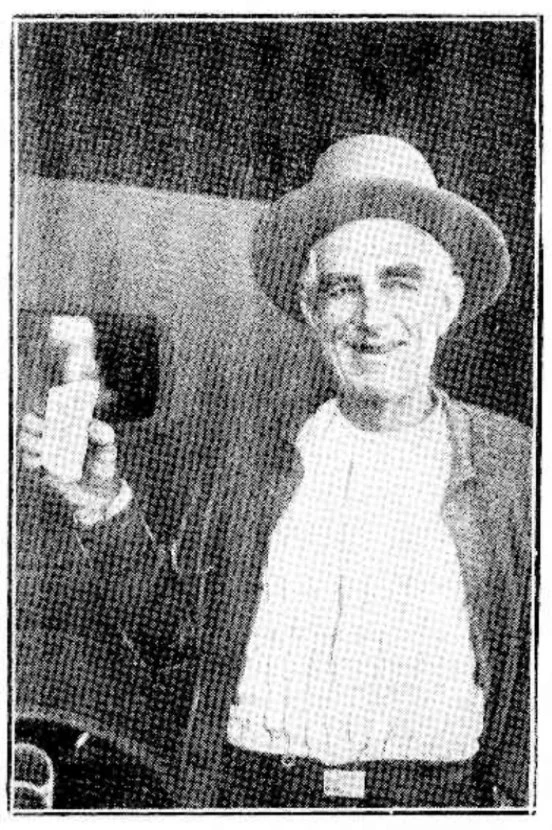Jack McNicol
Jack McNicol with Pandora.
John "Jack" McNicol was a miner at Lightning Ridge between World War I and World War II. Born in Queensland on 6 September 1875, McNicol lived a varied life before coming to Lightning Ridge and later becoming famous for his discovery of The Pandora Stone.
A former circus clown, McNicol first came to Lightning Ridge in the 1920s. It was in 1928 that he made his name. Prospecting on the old Angledool field, in a claim adjacent to where Charlie Dunstan had found his own famous stone two decades earlier, McNicol sank a shaft after his mate Fred Bodel flipped a coin to determine where to dig. Beneath a fault in the sandstone, he uncovered a single, large stone, Pandora.
Descriptions of the stone vary: it weighed around 700 to 750 carats, measured roughly four inches long. One early description likened it to fossil bone, likely from a plesiosaur. Cut and polished by Harold Frazer and Poppy Wilson, it was transformed into a gem quality specimen weighing 590 carats.
McNicol famously refused an offer of ten £100 notes and a new Chevrolet from buyer Elsie Jenkins. He instead carried the stone around in a Capstan tobacco tin lined with cotton wool and kept it, for a time, in a Sydney safe deposit box. By 1935, Pandora was again offered for sale. Some claimed it sold for £800; others that McNicol lost it after mortgaging the stone and failing to pay the bank charges. It was sold at Sotheby’s in London in 1965 for £6,200.
McNicol was a familiar sight on the field, travelling in a horse and sulky and racing his horse at local meetings.
Jack McNicol died in Queensland on 27 March 1937 at the age of 61. He is buried in Stanthorpe Cemetery.
Article: Research by Leisa Carney, edited by Russell Gawthorpe. LRHS research compiled by Len Cram and Barbara Moritz. Sources: Lightning Ridge: The Land of Black Opals, Ion L. Idriess, 1940, chapter XVII; The Lightning Ridge Book, Stuart Lloyd, 1967, p. 155; Lightning Ridge - The Home of the Black Opal: Unique to the World, Gan Bruce, 1983, pp. 65, 77; Walgett Spectator, 7 June 1928; 21 June 1928; Annual Report of the Department of Mines, NSW, 1928, pp. 30, 99.

